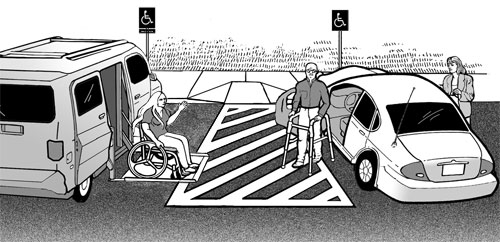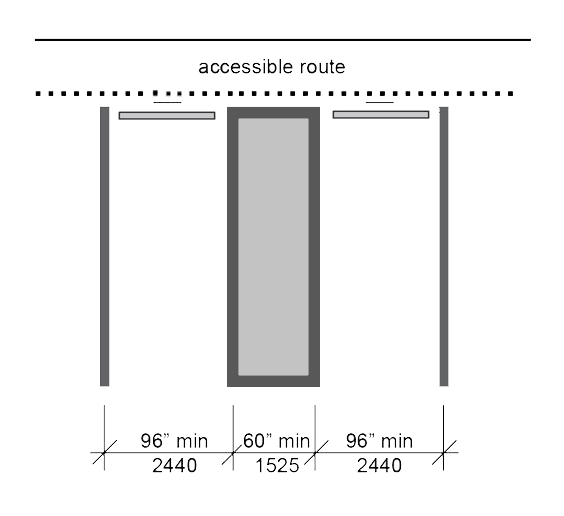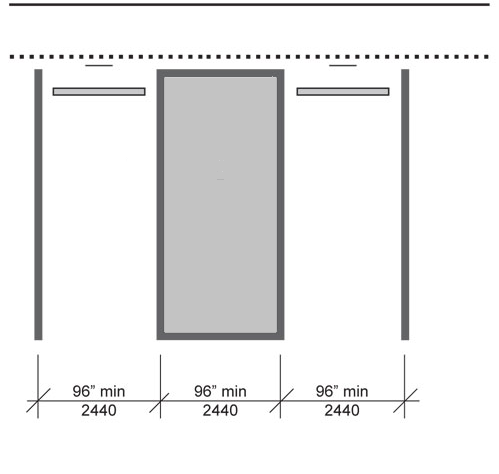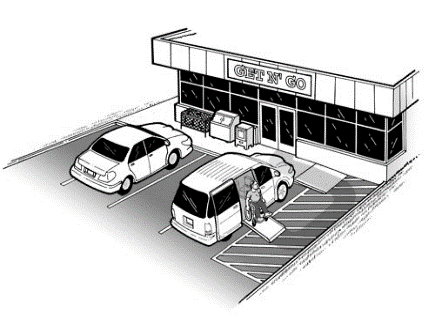Accessible Parking Spaces
When state or local governments, businesses and non-profit organizations provide parking lots or garages, accessible parking spaces complying with the Americans with Disabilities Act (ADA) must be provided.
Accessible parking spaces are different than traditional parking spaces. They have specific features that make it easier for people with disabilities to access your programs, goods or services.
Topic
Read this to get a basic understanding of this topic.
- For more detailed information on a topic, view Guidance & Resource materials
- For information about the legal requirements, visit Law, Regulations & Standards
Features
Location
In parking lots or garages, accessible parking spaces must be located on the shortest accessible route to the accessible entrance. An accessible route is the path a person with a disability takes to enter and move through a building or facility.
Access Aisles
Accessible parking spaces must have access aisles. Access aisles provide a designated area for people who use wheelchairs or other mobility devices to get in and out of their car or van. Mobility devices allow people with disabilities to move about independently. They include walkers, canes, crutches, braces, manual or power wheelchairs, Segways, and electric scooters.
Access aisles must be:

Two accessible parking spaces can share an access aisle with the access aisle between the two parking spaces (except in angled parking).
An access aisle can be placed on either side of the parking space (except in angled parking where it must be located on the passenger side of the parking space).
Parking Spaces
Accessible parking spaces must be provided for cars and vans.
Car accessible spaces must:

Van accessible spaces must (pick option #1 or #2)
Option #1
Option #2

Calculating Accessible Parking Spaces
The number of accessible parking spaces must be considered separately for each parking structure (lot or garage), not based on the total number of parking spaces provided on a site.
The chart below shows the number of accessible spaces required by the 2010 ADA Standards for Accessible Design.
| Total Number of Parking Spaces Provided in a Parking Lot or Facility | Minimum Number of Accessible Parking Spaces Permitted |
|---|---|
| 1 to 25 | 1 |
| 26 to 50 | 2 |
| 51 to 75 | 3 |
| 76 to 100 | 4 |
| 101 to 150 | 5 |
| 151 to 200 | 6 |
| 201 to 300 | 7 |
| 301 to 400 | 8 |
| 401 to 500 | 9 |
| 501 to 1000 | 2 percent of total |
| 1001 and over | 20, plus 1 for each 100, or fraction thereof, over 1000 |
| At least one of every six spaces must be van accessible. |
Special Parking Conditions
Limited Parking
Where parking spaces are limited to four or fewer spaces:

Parking at Hospital Facilities
Hospital Outpatient Facilities
Rehabilitation Facilities
Outpatient Physical Therapy Facilities
Learn More About the ADA and Accessible Parking
You might find the links below helpful:


